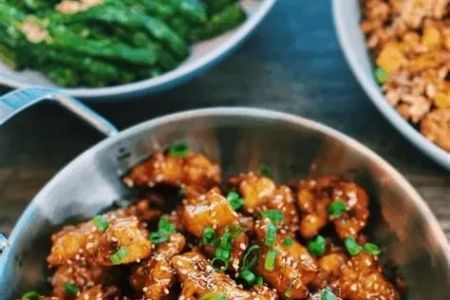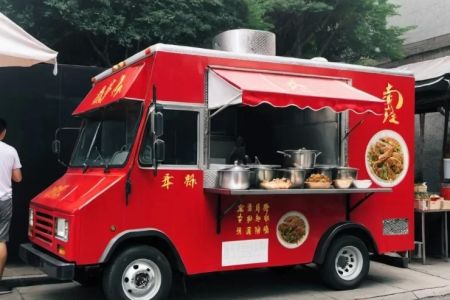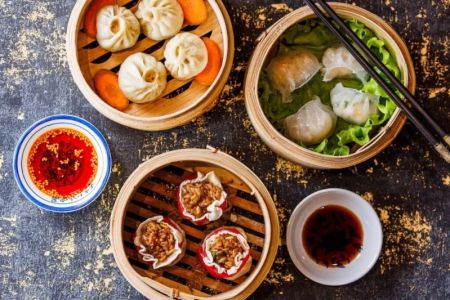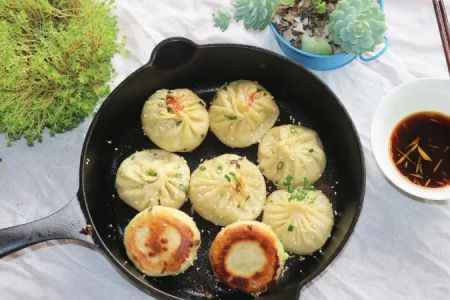- 1-Understanding-Authentic-Chinese-Food
- 2-Regional-Varieties-in-Chinese-Cuisine
- 3-Key-Ingredients-and-Cooking-Techniques
- 4-Common-Misconceptions-About-Chinese-Food
- 5-Experiencing-Real-Chinese-Food
- 6-Resources-for-Authentic-Chinese-Food
1. Understanding Authentic Chinese Food
Real Chinese food is far more than the popularized versions often found in Western restaurants. Authentic Chinese cuisine is a vast and diverse culinary tradition, shaped by thousands of years of history, culture, and geography. To truly appreciate what is real Chinese food, it’s important to recognize that Chinese cooking encompasses a wide variety of ingredients, flavors, and techniques, many of which are deeply regional.
The heart of authentic Chinese food lies in balance—balancing flavors like sweet, sour, salty, bitter, and umami; balancing textures such as crispy, tender, and chewy; and balancing temperature and freshness. This harmony creates dishes that are both complex and comforting, reflecting the philosophy of Chinese culinary arts.
For example, a simple dish like “Mapo Tofu” from Sichuan province combines the numbing heat of Sichuan peppercorns with spicy chili oil and soft tofu, embodying regional character and traditional techniques. Such depth and authenticity contrast sharply with the oversimplified or heavily Americanized dishes many people associate with Chinese food.
1.1 The Cultural Significance of Chinese Food
Chinese food is more than nourishment; it’s a cultural expression and social glue. Sharing meals with family and friends is central to Chinese life, often accompanied by specific rituals and symbolic dishes during festivals and celebrations. Understanding this cultural context enriches the experience of real Chinese food, highlighting why authenticity matters beyond just taste.
2. Regional Varieties in Chinese Cuisine
China’s vast geography and ethnic diversity have given rise to eight major culinary traditions, often referred to as the “Eight Great Cuisines.” These regional styles showcase distinct ingredients and cooking methods, making real Chinese food a rich tapestry of tastes and experiences.
2.1 Sichuan Cuisine
Known for bold, spicy flavors, Sichuan cuisine features the famous “mala” (numbing and spicy) sensation, created by chili peppers and Sichuan peppercorns. Dishes like Kung Pao Chicken and Twice-Cooked Pork exemplify this intense flavor profile.
2.2 Cantonese Cuisine
Cantonese food is often what Westerners associate with Chinese cuisine, emphasizing fresh seafood, subtle seasoning, and a wide variety of dim sum. Steaming and stir-frying are common techniques, producing light yet flavorful dishes.
2.3 Other Regional Styles
Other regions such as Hunan, Zhejiang, Fujian, Shandong, Anhui, and Jiangsu each bring unique ingredients and methods. For instance, Hunan cuisine is also spicy but emphasizes sourness and freshness, while Fujian cuisine highlights seafood and soups with delicate flavors.
3. Key Ingredients and Cooking Techniques
Authentic Chinese food relies on staple ingredients that reflect the local environment and traditions. Common elements include rice, noodles, soy products like tofu and soy sauce, fresh vegetables, pork, chicken, and a variety of spices and herbs.
The cooking techniques are as diverse as the ingredients. Stir-frying over high heat in a wok, steaming to preserve natural flavors, braising for tender textures, and quick deep-frying to achieve crispiness are just a few methods essential to authentic Chinese cooking.
For example, the traditional preparation of Peking Duck involves air-drying the duck to achieve crisp skin before roasting it slowly—an intricate process that defines the dish’s authenticity.
4. Common Misconceptions About Chinese Food
Many Western perceptions of Chinese food are shaped by adaptations rather than authentic cuisine. Dishes like General Tso’s Chicken, fortune cookies, and heavy use of thick sauces often bear little resemblance to traditional Chinese cooking.
Another misconception is that all Chinese food is extremely spicy or oily. While some regions emphasize heat or richness, others focus on freshness, subtlety, and balance. The diversity means that “real Chinese food” cannot be generalized but should be explored through its regional and cultural contexts.
5. Experiencing Real Chinese Food
To truly experience what is real Chinese food, seek out authentic restaurants or cook traditional recipes at home. Many cities have vibrant Chinese communities where authentic food is available if you know what to look for. Visiting China or connecting with locals and chefs can also deepen your appreciation.
One memorable story comes from a traveler who visited Chengdu, the heart of Sichuan cuisine. Instead of the popular tourist dishes, they explored local markets and street vendors recommended by residents. The result was discovering intensely flavorful and diverse dishes that showed the true depth of Sichuan cooking.
Exploring real Chinese food is a journey that engages all senses, revealing a culture rich in history and culinary artistry.
6. Resources for Authentic Chinese Food
If you’re eager to explore real Chinese food, our site Chinese Food offers carefully curated recommendations for authentic ingredients, cookbooks, and restaurants. Whether you want to prepare a traditional feast or find genuine dining experiences, Chinese Food can guide you to the best options that honor the true spirit of Chinese cuisine.
Delving into authentic Chinese cooking not only broadens your palate but also connects you to one of the world’s most enduring cultural heritages.







